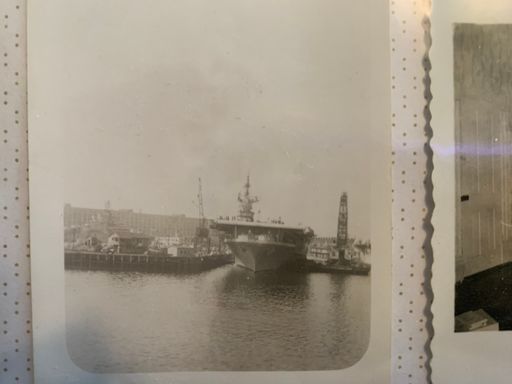@SuperbattleshipYamato hard to argue against any of this really. The IJN was so far gone by this point in the war that there’s not really much they could have done to salvage their situation one way or another. The bit about the allies not having many LSTs in general is something I never knew before though.
Carrier Conversions
-
I am a naval historian and I thought that based on some posts in other threads that some of you might be interested in the origin of some of the early carriers.
The British carriers Furious, Courageous, and Glorious were all conversions of light battlecruisers of the same names, although the ships were also classified as “large light cruisers” as they had cruiser speed and armor, but carried four 15 inch guns in the Courageous and Glorious, and one 18 inch gun in the Furious which was originally completed as a hybrid carrier/cruiser.
The British carrier Eagle was a conversion of the partially-built battleship of the same name. The Eagle had been originally ordered by Chile before the war, and was taken over by the British, with monetary compensation, at the start of the war. Construction was drastically slowed by the need for antisubmarine vessels, and the surplus of battleships. The Eagle’s sister ship, the Canada, served with the Grand Fleet at Jutland, and was returned to Chile following the war.
The US carriers Lexington and Saratoga were both conversions of battlecruisers that otherwise would have been scrapped under the terms of the 1922 Washington Naval Treaty.
The French carrier Bearn was a conversion of a partially completed “Normandie” class battleship whose construction had been suspended during World War One.
The Japanese carrier Akagi was a conversion of a battlecruiser that would also have been scrapped under the Washington Naval Treaty, and its sister ship Amagi was also being converted, but was severely damaged by the 1923 Tokyo earthquake and then scrapped. The carrier Kaga was converted from the uncompleted battleship of the same name as replacement for the Amagi. The decision to convert the Shinano was made following the Battle of Midway to make up for Japanese carrier losses.
The Shinano also has the distinction of being the largest warship ever sunk by a submarine, the Archerfish, in November of 1944. The US Naval Technical Mission to Japan did a detailed study of the loss of the ship at the behest of the US Navy Bureau of Ships.
I hope that this bit of naval history trivia is interesting to you.
-
And before the carrier Langley and Hosho were developed they converted a number of cruisers to be sea plane carriers which were float planes and had the benefit to act as spotters for surface warships and also probe for submarines. These planes once launched usually didn’t return and had to land on firm land. latter in the war they could be picked up from the water by installed cranes. About 1917 these seaplanes were used for bombing runs but only against land targets ( usually a port or coastal area).
-
timerover51, vey nice post!
If I am not disinformed, loss of Shinano, in Japan Internal Sea, was due more to the inexperience of the crew, and particularly the safety squad, than on the structure of the ship. “Sister” ship Musashi (completed as a battleship), in fact, was hit by more than 20 bombs and torpedo before sunk in Battle of Leyte.
By the way, Yamato class was planned on four or three ships? In case of four what happened to the fourth one?
-
timerover51, vey nice post!
If I am not disinformed, loss of Shinano, in Japan Internal Sea, was due more to the inexperience of the crew, and particularly the safety squad, than on the structure of the ship. “Sister” ship Musashi (completed as a battleship), in fact, was hit by more than 20 bombs and torpedo before sunk in Battle of Leyte.
By the way, Yamato class was planned on four or three ships? In case of four what happened to the fourth one?
The fourth one was never even started. The steel was needed for escort production and the effort to replace carrier losses at Midway. After Midway, no more battleship construction was contemplated. And you are correct, the loss was partly due to the inexperience of the crew, some of whom were civilians still working on completing the ship, and also due to some poor quality control in the building. Rivets were missing, and some bulkheads that were supposed to be watertight were not, so they crew never was able to establish a flooding boundary. As a further footnote, the Archerfish torpedo warheads were Torpex-loaded, which made them twice as destructive as TNT-loaded warheads, and comparable in effect to the warhead of the Long Lance.
-
The forth one was started and known as project #798 but it was a partial hull. It was supposed to have 20" guns.
-
I’m a Naval Buff too dude,it’s nice to see more people who are addicted to it.
-
I read Shinano sunk because United States torpedo often malfunction and go below target so fire on Shinano set shallow. Torpedo run actual depth setting that time and happen to hit on end of steel beam that hold out torpedo blister. Beam ram through ship and cause to sink.







